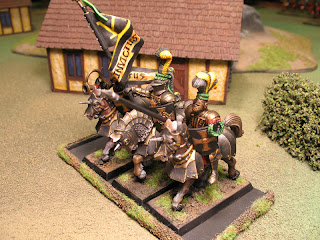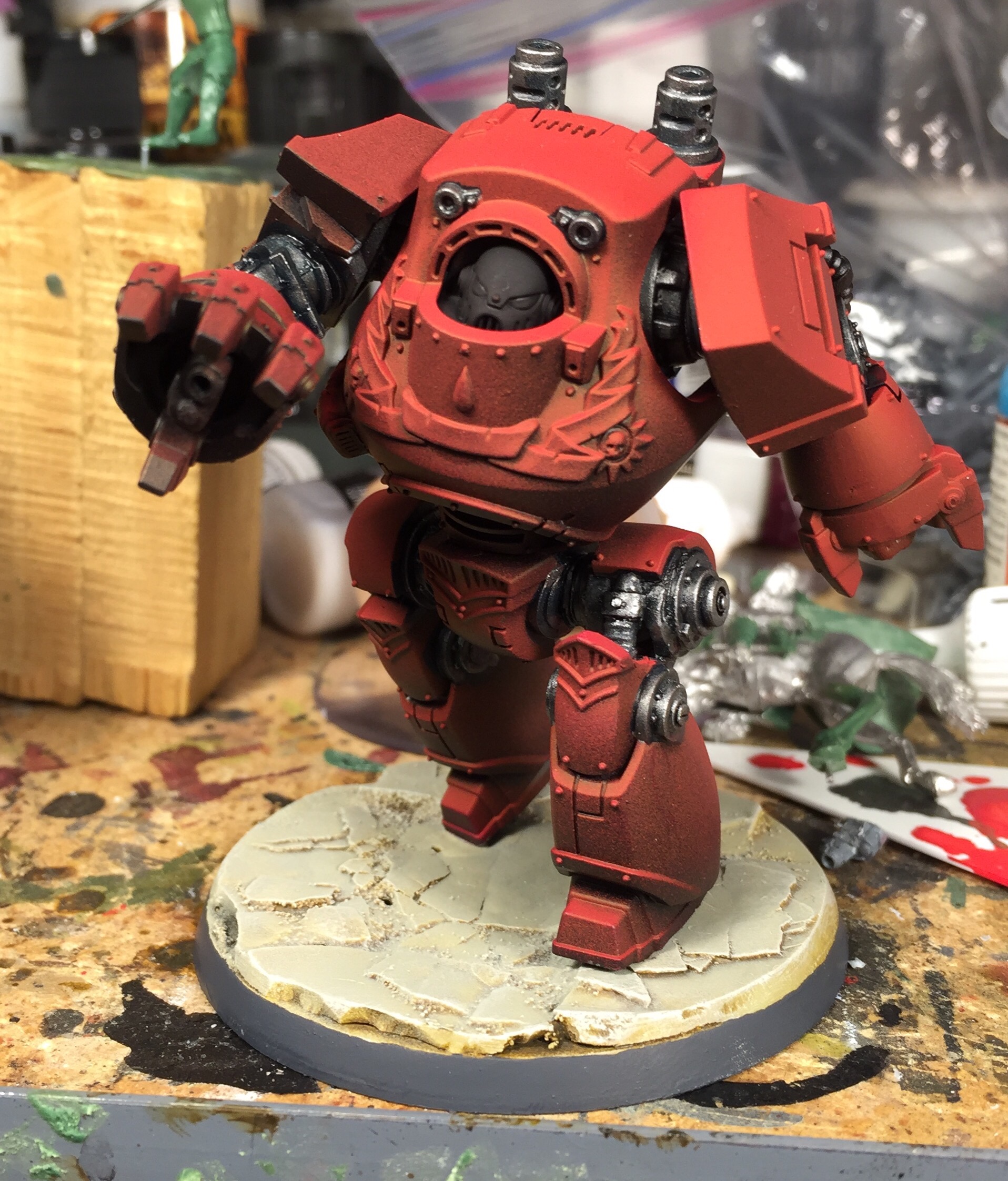As anyone in this hobby knows, just about everyone is interested in taking better pictures of their work right? because what better way to show it off than taking photos and posting them on your blog or public forums. The amount of shitty photos I see get posted is annoying because there isn't really much point to posting blurry, out of focus or undetailed photos. Personally I am a complete photography novice, I never took a picture of a miniature until about a year ago, and over that time I think my photos have improved alot. To point where people are actually complimenting me on them. I was surprised to realize just last night, That I was making some very incorrect assumptions about what I was doing. (I'll go into that in a second) , So I figured I had to get to the bottom of this.
There are couple basic premises of miniature photography that I have pieced together from a variety of sources. Number one is ideally you want a neutral background, people recommend a easily built light box, a curved piece of poster board or some type of light tent. Number 2, is you want to use a tripod and use the "macro" or "super macro" setting on your camera. Number 3 is you want your flash off. as that burst of brilliant light washes out the color and detail of your miniature. finally, you need to manually set the shutter speed, exposure and aperture size.
This where I drive off the side of the road. I'm one of those guys that rarely RTFM, because I like to figure shit out for myself. Don't ask me why- its Sooooo much easier to read the manual, but I guess I'm a glutton for punishment when it comes down to figuring stuff out. SO If you go all the way back to early last year and look at my pictures in my homemade Light Box, they're dark, and kind grainy and I needed use "lightroom" bring up the color and contrast of the pics, because I couldn't get enough light in the picture with flash off, even with a 100 watt light right above the miniature itself. I tried all kinds of stuff, I couldn't get my pics better. I was using this mini photography guide I picked up somewhere, I had all the settings right. what was up?
I had read of course you want your Aperture to be as small as possible and your shutter speed as fast as possible in order to take good pictures., However with Aperture that small, no light is getting into the camera without a flash. your maximum speed is also contingent on how much light can into the camera as well. An Aperture value of F.4 was recommended to me right in the middle so I figure great...so that what I was using. Finally I said screw the light box, I am going to start taking pictures on the game table, and I am going to try a smaller Aperture. and add a ton of light. So I had my light above the table, ( a couple 100 watt fluorescents) and I also used a hand held work light behind the camera, but pointing at the target.
Bang -Suddenly my pictures got ALOT better, the color was there, the detail was great, the non-neutral background really wasn't distracting from the picture. I must been doing something right. Well, kind of- I inadvertently made my Aperture larger instead of smaller as in all the way down to F2.8. As I had assumed the smaller number was the smallest aperture. However its counterintuitive and the largest number 8 is the smallest Aperture. The thing is the larger the Aperture the more light gets into the camera and that's good. Here are some photo's I took today as sample with my W.I.P Knights of the Blazing Sun.
(note all pics are ISO 100 speed setting, with the Flash Off, and Macro ON, with my Canon A640 Powershot on a small Tripod. )


The above three shots are Aperture setting of F2.8, the largest it will go with a shutter speed of 1/30th which where It needed to be for the exposure to be at "+0" (what you want ideally, you can play around with the exposure but thats another topic)


These above three shots are an Aperture Setting of F4. The shutter speed is 1/6th
exposure "+0"


The final three above are an Aperture Setting F8, the fastest speed I could get and achieve a "+0" exposure is now down .3 seconds ( the slower the speed the sooner even the motion of taking the photograph starts making the picture blurry. Your ISO speed helps combat this.
Conclusions- There isnt a hell of a lot of difference in these pics at all, despite that my Aperture went from the largest possible to the smallest possible. There are subtle differences for example the 1st three have the shortest depth of field, you see the building to rear is a bit blurry but the Knights are very clear as you progress to F8, the background gets clearer with what I see as a slight cost to the clarity of the knights, its very slight..not even particularly noticable. The most important thing as this little demo shows, is the LIGHT.. overhead light and back lighting are key, obviously the ISO speed helps with any camera movement and Macro setting is for close up detail, but other than quality of your camera lense the amount of light getting in your picture seems to outweigh your Aperture setting. Shutter Speed and Exposure are directly relevant but even here we go from 1/30 to .3 which should be a noticable speed difference, (as when you get to around "1" things often get blurry), but I dont see much of one here.
In Part II, I am going back to my old lightbox and a new neutral backdrop and then compare.
Monday, January 7, 2008
Taking Better Pictures..Part I
Posted by JPL at 1:57 AM
Labels: Commentary, Modeling, Photography, WFB
Subscribe to:
Post Comments (Atom)












































2 comments:
The guides be damned - looks like the AV setting has zero impact on the pic. The back ground is blurry- but its only the forground that matters. I'll be interested to see what happens on a white backdrop. I wonder if the camera will have trouble capturing a unit when using a large apeture.
Interesting side note: when using the timer function on AV, the camera seems to auto processing the shutter speed. The shutter setting of my most recent pics auto selected 1/6 second to go with the very small apeture setting.
Nice pics, and a good write up as well. If at all possible I would be intrested in seeing the actual set up. I.E. a behind the scenes shot of your positioning and lighting.
Post a Comment